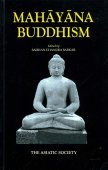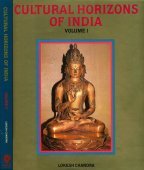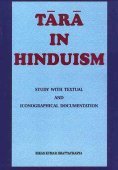Mantrayana: 2 definitions
Introduction:
Mantrayana means something in Buddhism, Pali. If you want to know the exact meaning, history, etymology or English translation of this term then check out the descriptions on this page. Add your comment or reference to a book if you want to contribute to this summary article.
In Buddhism
General definition (in Buddhism)
Source: Great Middle Way: BuddhismMantrayana, the vehicle of mantra, is the easy-difficult path. It is easy to perform, but difficult to understand. We can protect (trayati) the mind (manas) at all times, and since the mind is naturally pure, clear, and peaceful, Buddha Nature spontaneously manifests.
Source: China Buddhism Encyclopedia: BuddhismThe Mantrayana, as a path kept secret to protect it from misuse, is not devulged to people outside the path. However, the qualifications for entering the Mantrayana and some of its salient points are openly discussed, such as in "Kalachakra Tantra -- Rite of Initiation" by the Dalai Lama and Jeffrey Hopkins. Below, I excerpt and comment on a few quotes of the Dalai Lama, with his words in RED, first about the value of practicing mantra.
The distinctive feature of the Secret Mantra Vehicle comes in terms of additional techniques for quickly developing the meditative stabilization that is a union of calm abiding samatha and special insight vipasyana --one-pointed meditative stabilization samadhi realizing emptiness shunyata . This mainly is achieved through diety yoga. . . . Secret Mantra is a case of using imagination as the path.
See also (Relevant definitions)
Full-text: Manjushrimulakalpa, Nyingma, Karandyavyuhasutra, Kinnara.
Relevant text
Search found 8 books and stories containing Mantrayana; (plurals include: Mantrayanas). You can also click to the full overview containing English textual excerpts. Below are direct links for the most relevant articles:
The Great Chariot (by Longchenpa)
Part 2 - Why mantrayana is higher than the vehicles of characteristics < [A. Resolving the view]
B. As for the reason why this needed to be composed < [Chapter XIV - Conclusion]
2f) How, by the power of mind, accumulations are gathered < [Part 2 - The essence]
The Catu-Bhanavara-Pali (critical study) (by Moumita Dutta Banik)
The Three Vehicles Of Buddhism (by Kensur Lobsang Chojor)
Stupas in Orissa (Study) (by Meenakshi Chauley)
During the Bhaumakara’s reign < [Chapter 2]
Lakulisha-Pashupata (Philosophy and Practice) (by Geetika Kaw Kher)
A brief insight in Vajrayana Buddhism < [Chapter 2 - Spread and Transition]
Complete works of Swami Abhedananda (by Swami Prajnanananda)
Chapter 4 - Buddhist Councils And Buddhist Thoughts < [Discourse 7 - Thoughts on Sankhya Buddhism and Vedanta]
Related products


